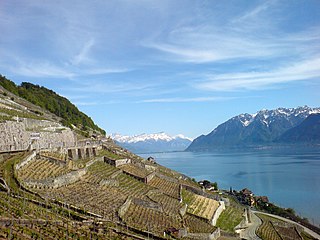
Riex is a former municipality in the canton of Vaud in Switzerland, located in the district of Lavaux-Oron.
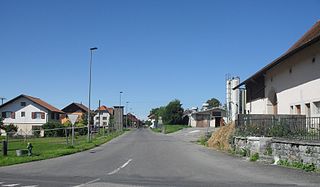
Chanéaz is a former municipality in the district of Jura-Nord Vaudois of the canton of Vaud in Switzerland. The municipalities of Chapelle-sur-Moudon, Correvon, Denezy, Martherenges, Neyruz-sur-Moudon, Peyres-Possens, Saint-Cierges, Thierrens and Chanéaz merged on 1 January 2013 into the new municipality of Montanaire.
Orzens is a municipality in the district of Jura-Nord Vaudois in the canton of Vaud in Switzerland.
Chéserex is a municipality in the district of Nyon in the canton of Vaud in Switzerland.
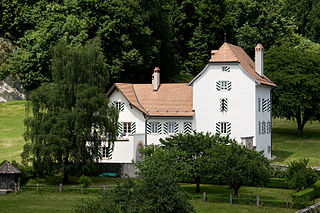
Baulmes is a municipality in the district of Jura-Nord Vaudois in the canton of Vaud in Switzerland.

Jaun is a municipality in the district of Gruyère in the canton of Fribourg in Switzerland. It is the only German-speaking municipality in Gruyère.

Madiswil is a municipality in the Oberaargau administrative district in the canton of Bern in Switzerland. Since January 1, 2007, Gutenburg is part of the municipality. On 1 January 2011 Kleindietwil and Leimiswil were merged with the municipality of Madiswil.
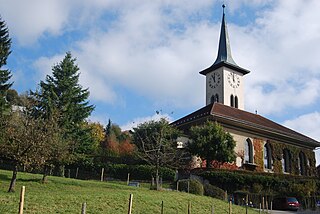
Grosshöchstetten is a municipality in the Bern-Mittelland administrative district in the canton of Bern in Switzerland. On 1 January 2018 the former municipality of Schlosswil merged into the municipality of Grosshöchstetten.

La Brévine is a municipality in the Neuchâtel Canton in Switzerland. It is the largest village in its eponymous valley, Vallée de la Brévine. The area is renowned for its complex microclimate, which is often much colder than nearby locations.
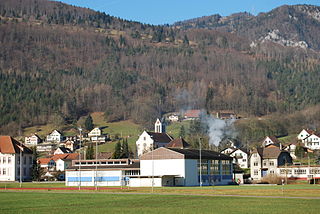
Herbetswil is a municipality in the district of Thal in the canton of Solothurn in Switzerland.

Langenbruck is a municipality in the district of Waldenburg in the canton of Basel-Landschaft in Switzerland.

Sissach is a municipality and the capital of the district of Sissach in the canton of Basel-Country, Switzerland.
Hérémence is a municipality in the district of Hérens in the canton of Valais in Switzerland.

Orsières is a municipality in the district of Entremont in the canton of Valais in Switzerland.

Chandolin is a village in the district of Sierre in the Swiss canton of Valais. An independent municipality before, it merged on 1 January 2009 with neighboring Ayer, Grimentz, Saint Jean, Saint-Luc and Vissoie to form the municipality of Anniviers.
Saint-Jean is a village in the district of Sierre in the Swiss canton of Valais. An independent municipality before, it merged on 1 January 2009 with neighboring Ayer, Chandolin, Grimentz, Saint-Luc and Vissoie to form the municipality of Anniviers.

Vissoie is a village in the district of Sierre in the Swiss canton of Valais.
Courtepin is a municipality in the district of See in the canton of Fribourg in Switzerland. On 1 January 2017 Barberêche, Villarepos and Wallenried merged into the extant municipality of Courtepin.
Fräschels (German) or Frasses is a municipality in the district of See in the canton of Fribourg in Switzerland.

Anniviers is a municipality in the district of Sierre in the canton of Valais in Switzerland. It was formed through the merger of six municipalities in Val d'Anniviers: Ayer, Chandolin, Grimentz, Saint-Jean, Saint-Luc and Vissoie. The merger became effective 1 January 2009, creating the third largest municipality of Switzerland by area.























